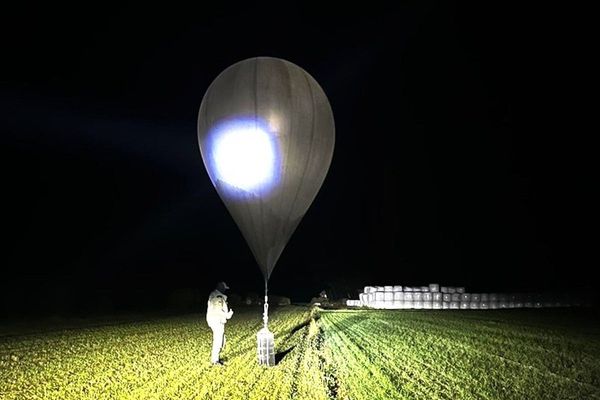Planters do far more than hold plants—they serve as integral design elements that shape the ambiance and character of a space. Whether in luxury hotels, high-end residences, or corporate environments, the right planters can define spatial boundaries, add texture, and create an inviting atmosphere. Professional designers understand that selecting the right planters is about balancing aesthetics, functionality, and sustainability.
This guide explores how design experts source planters to elevate distinctive spaces, ensuring every element aligns with their vision.
Understanding the Role of Planters in Design
Planters are versatile tools in interior and exterior design, offering benefits that go beyond simple greenery. Design professionals leverage planters in several key ways:
Enhancing Ambiance and Visual Interest
Strategically placed planters add depth and contrast to a space, softening hard architectural lines and introducing organic elements. In contemporary settings, large statement planters provide an artistic focal point, while smaller ones can be used to create symmetry and balance.
Defining Spatial Boundaries and Guiding Movement
In open-concept layouts, planters can function as natural dividers, subtly guiding foot traffic without the need for walls or barriers. They help delineate zones in restaurants, hotel lobbies, and office spaces while maintaining an airy, organic feel.
Integrating Biophilic Design Principles
Biophilic design—a concept that emphasizes the human connection to nature—relies heavily on planters to incorporate greenery into built environments. Studies show that plants enhance well-being, boost productivity, and improve air quality, making planters an essential component in modern workplace and residential designs.
Supporting Diverse Plant Species for Texture and Color
Planters allow designers to experiment with plant species that bring seasonal variation, textural contrast, and pops of color. From sculptural succulents in minimalist interiors to lush tropical foliage in resort settings, the right planters accommodate diverse botanical needs.
Key Considerations for Sourcing Planters
When sourcing planters, design professionals weigh multiple factors to ensure they align with their project goals.
Material Selection
The choice of material influences durability, aesthetics, and maintenance needs. Common options include:
- Concrete: Modern, durable, and ideal for urban spaces.
- Fiberglass: Lightweight, versatile, and available in a range of finishes.
- Ceramic: Elegant but fragile, best for indoor use.
- Metal: Sleek and contemporary, though some metals can rust over time.
- Eco-Friendly Alternatives: Sustainable options made from recycled materials or biodegradable components.
Size and Scale
Proportion is key when integrating planters into a design scheme. Oversized planters can make a bold statement in spacious areas, while smaller planters create cohesion in more intimate spaces. Designers often mix sizes to add dimension and depth.
Style and Aesthetic Compatibility
Planters should harmonize with the surrounding decor. A minimalist space might call for sleek, matte-finish planters, while a Mediterranean-inspired patio benefits from rustic terracotta options. The right selection enhances the overall design narrative.
Functionality and Customization
Designers frequently seek planters with specific functionalities, such as:
- Self-watering systems to reduce maintenance.
- Adequate drainage to prevent root rot.
- Custom finishes and colors to match branding or design themes.
- Modular designs for flexibility in commercial settings.
Where Design Professionals Source High-Quality Planters
Sourcing high-quality planters requires a keen eye for craftsmanship, sustainability, and design versatility, ensuring that every piece enhances the overall aesthetic and function of a space.
Specialty Retailers and Boutique Shops
Boutique stores offer unique, handcrafted pieces that add character to high-end interiors. These retailers often collaborate with designers to provide one-of-a-kind statement pieces.
Wholesale and Trade Suppliers
For large-scale projects, designers turn to wholesalers to source high-quality planters at competitive prices. Many suppliers offer exclusive collections tailored to professional decorators.
Custom Fabrication Studios
When a project demands something truly unique, custom fabrication studios can create bespoke planters that align perfectly with a designer’s vision. These studios offer complete control over size, material, and finish.
Sustainable and Local Artisan Vendors
Eco-conscious designers prioritize local artisans who use sustainable materials. Handmade planters crafted from reclaimed or recycled materials offer a blend of authenticity and environmental responsibility.
Online Marketplaces and Direct-to-Consumer Brands
E-commerce platforms provide convenience and variety. Many designers source from businesses like Pots Planters & More, which offer a curated selection of modern and durable planters suited for commercial and residential projects.
Expert Tips for Selecting the Perfect Planters
Choosing the right planters requires careful consideration of several factors that influence both aesthetics and functionality. Durability is one of the most critical aspects, especially for outdoor spaces that must endure fluctuating temperatures, strong winds, and other environmental challenges. Designers often opt for weather-resistant materials such as fiberglass, metal, or high-quality concrete to ensure longevity.
Beyond durability, the composition and arrangement of planters play a crucial role in shaping the visual dynamics of a space. Mixing different materials, finishes, and varying planter heights can create a layered, sophisticated look that enhances depth and dimension. This approach allows designers to craft engaging environments that feel natural and intentional.
Functionality is another key element when selecting planters. Proper drainage is essential to prevent water buildup and root rot, which can compromise plant health over time. Many high-end planters now incorporate self-watering mechanisms or built-in reservoirs to simplify maintenance while keeping plants thriving.
Sustainability is also an increasing priority for designers who aim to minimize environmental impact. Choosing planters made from recycled or responsibly sourced materials supports eco-conscious design practices while maintaining style and durability. Whether selecting handcrafted planters from local artisans or exploring innovative, sustainable options, designers can ensure their selections align with both aesthetic and environmental goals.
Conclusion
Planters are more than just containers for plants—they are essential design elements that enhance a space’s visual appeal and functionality. By carefully sourcing planters based on material, scale, style, and sustainability, design professionals can transform both indoor and outdoor environments. Whether through high-end retailers, custom fabricators, or eco-conscious artisans, the right planters make a powerful impact, bringing a touch of nature into even the most sophisticated spaces.







